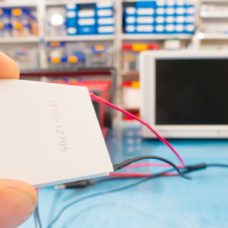Today, solar panel efficiency is recorded to be around 26%. Meaning, for every kilowatt (1,000 watts) of equivalent sunlight, about 740 watts of electrical power goes to waste.
Scientists, however, are approaching solar cell inefficiency from different engineering angles.
For example, industrial silicon-based solar cells suffer from an effect known as Light-Induced Degradation (LID) that causes efficiency loss. PV modules loss around 2% of their performance during their first hours of exposition to sunlight
2% doesn’t sound like much of a loss. But when seen from a big-scale point of view, it’s too much green electricity to lose.
Light-Induced Degradation has puzzled scientists for forty long years. They have numerous scientific literature on the subject, but none offered conclusive explanation as to what causes the PV performance drop.
It’s only now that we can say the LID mystery that has been affecting solar panel efficiency is officially solved.
Knocking Solar Panel Efficiency up by 2%
Solar power is one of our best shots at harnessing renewables, and solar panels are our best solution to convert sunlight into clean, sustainable energy.
In the last few decades, solar has seen significant growth, driving all renewable energy industries in its wake. But with only up to 26% conversion efficiency (most between 15 and 20%), there’s still a big for improving solar cells.
Now, we can say that the 40-year-old mystery surrounding Light-Induced Degradation has finally been solved, and less of sunpower will go to waste.
But what would a paltry 2% more of sun power mean? Professor Tony Peaker from the University of Manchester (UK) thinks it means a lot:
“During the first hours of operation, after installation, a solar panel’s efficiency drops from 20% to about 18%. An absolute drop of 2% in efficiency may not seem like a big deal, but when you consider that these solar panels are now responsible for delivering a large and exponentially growing fraction of the world’s total energy needs, it’s a significant loss of electricity generating capacity.”
By multiplying this 2% drop by the number of cells in the ever-growing installed solar farms across the globe, we’ll be looking at a significant energy cost that “measures in the 10’s of gigawatts”, and which would be made up for by fossil fuels.
Researchers estimate the energy loss worldwide from LID to be equivalent to more energy than what the UK’s 15 nuclear power plants can generate combined.
Using a specialized electrical and optical technique, Prof Peaker and colleagues have pinpointed a material defect that triggers the LID phenomenon in silicon photovoltaic cells. This defect lies dormant within the silicon used to manufacture the solar panel until it gets exposed to sunlight.
The UM team found that the “electronic charge within the bulk of the silicon solar cell is transformed under sunlight, part of its energy-generating process. The team found that this transformation involves a highly effective ‘trap’ that prevents the flow of photo-generated charge carriers (electrons).”
This paper, published in the Journal of Applied Physics, comes as the culmination to more than 270 research papers that came before it in the last 40 years without being able to find a definitive solution to the LID problem.
Now that the UM scientists have uncovered the material defect causing Light-Induced Degradation, it’s now the turn of engineers to find a way to fix the problem and knock solar panel efficiency up a bit.



















Comments (0)
Most Recent